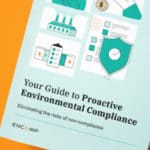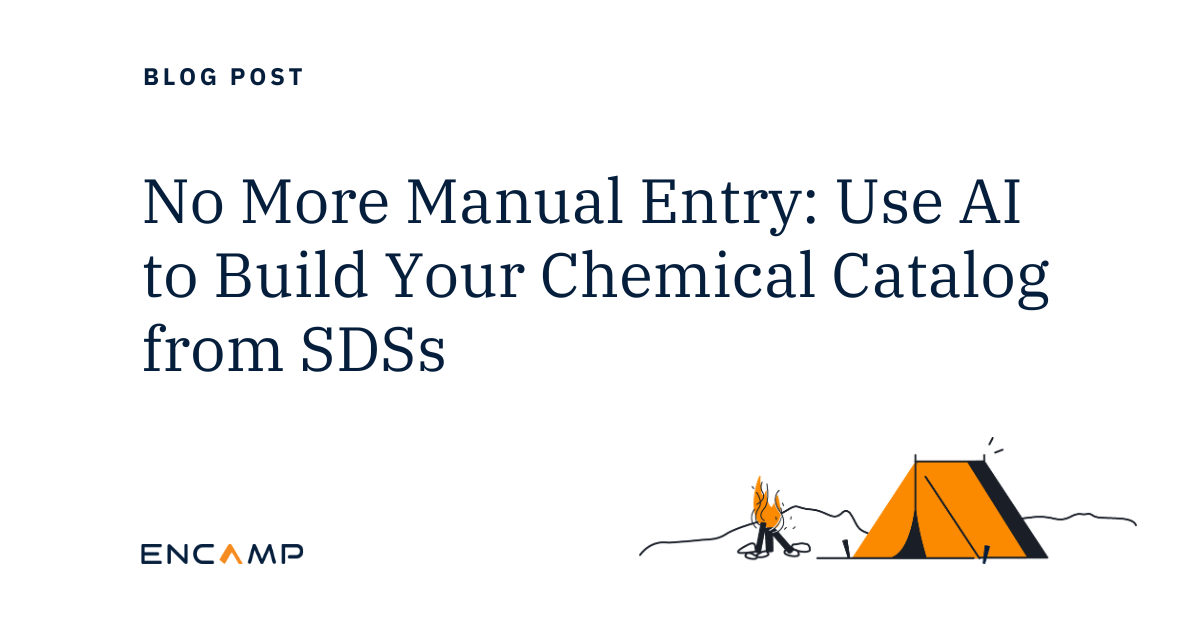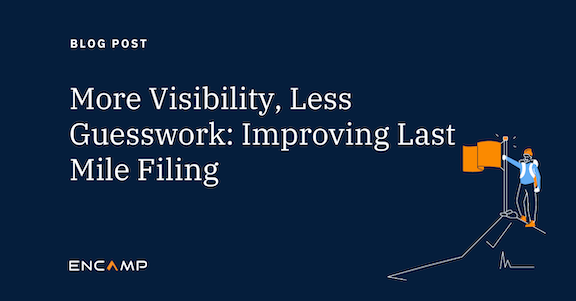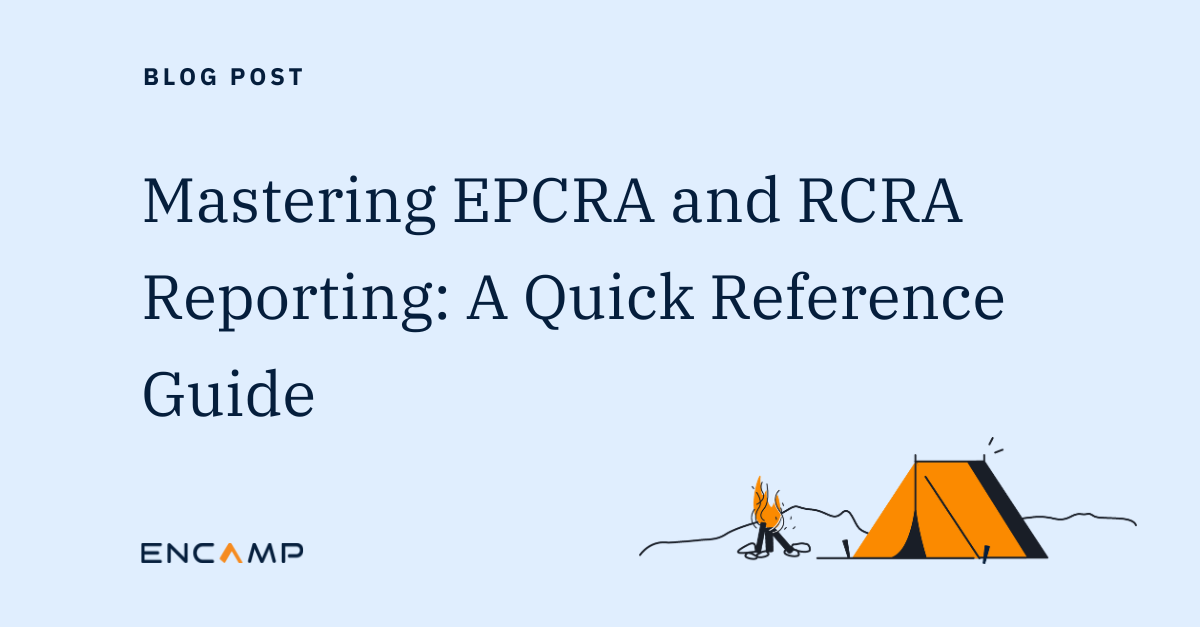Think of it as environmental compliance knowledge sharing. On an EHS team, it’s one of the best ways to increase productivity in the compliance reporting process… and greater productivity is one of the key elements of proactive environmental compliance.
In nearly every EHS operation, there’s little argument that collecting and analyzing data for EPCRA compliance reports is labor intensive. It’s also exhausting. EHS managers and teams are typically in charge of environmental compliance for up to hundreds of chemicals — often in multiple facilities and states — and they can spend hundreds of hours just chasing down information.
Staying up to date with state and federal regulations that change constantly is equally demanding, especially when regulations range from federal agencies to the state and county level. Which regulations apply to which facilities? Are chemicals on EPA’s extremely hazardous substance list, and what are their threshold planning quantities (TPQs) if they are?
Are your EHS teams working “productively”?
In and of itself, researching new and updated regulatory guidelines and their applicability every reporting cycle can be a full-time job. Other reporting tasks are less obvious, but are just as necessary and also add up. Having to review compliance actions and manage back-reporting requirements are just two examples.
Are these reporting-related efforts productive? Most times, yes. They contribute to finalizing and submitting required compliance reports. But are the tasks accomplished productively? That is, are you using environmental compliance knowledge sharing and technology such as data digitization to make processes more efficient and potentially automated and repeatable?
For many EHS teams the answer is simply, no.
Too often, the output of an EHS team gets held up by paper trails and repetitive manual work that isn’t coordinated by way of people and process. Insufficient head count and employee turnover within an EHS team can be additional causes. Whatever the roadblocks, reporting mistakes are unavoidable when employees are overworked and rushed to meet submission deadlines.
A worse outcome is that EHS professionals get pulled away from focusing on more sustainable compliance program initiatives that, long term, are viewed as higher year-round priorities than reporting.
The lack of institutional knowledge sharing
A troublesome problem many EHS teams face is that institutional knowledge of the reporting process comes down to one or two people. EPCRA reports aren’t always the most popular things among EHS professionals, after all. So, ultimately, someone gets saddled with the compliance reporting no one else wants to do and it becomes a one-person show.
At the other end of the spectrum, some EHS teams include someone who’s assumed the responsibility of compliance reporting for the last 10 or 20 years. This person is the single reporting authority and subject matter expert (SME) for the entire company, and they hold the keys to all the reporting expertise.
Either way, when the knowledge of how to prepare and submit compliance reports is sequestered and not adequately shared throughout an EHS team and Operations (let alone enterprise-wide), it can lead to concerns beyond just productivity. As we discuss in Your Guide to Proactive Environmental Compliance:
- Can reporting knowledge from a current SME be fully transferred to other staff and new employees? How? Is there a process or training in place to do so? What if a lone SME retires or leaves the company?
- Are knowledge sharing methods scalable if the company acquires or adds new facilities or chemicals? Or both?
- How confident are you that all facilities can pass an agency audit?
When knowledge of requirements such as EPCRA and familiarity with Tier II reporting isn’t shared, it increases the risks of accidental omissions or missed reporting.
The consultant quandary
While consultants complete valuable tasks such as conducting chemical inventories, collecting and analyzing compliance data, preparing reports and submitting filings, their fees add up. Companies should therefore pay only for true value-add consultant services that are a fraction of billed hours, not for filling out forms and updating spreadsheets.
Work in smarter ways
It’s taken several years, but EHS teams are finally embarking on adopting new technologies that improve process efficiency and workforce productivity. These technologies largely fall into the category of digital transformation and tools such as cloud computing, digitization, and process automation.
The bigger picture, though, is that technology can empower employees on EHS teams to work in smarter ways. Moreover, technology reaches beyond a “one person reporting operation” — it’s a vehicle to distribute knowledge across a broader spectrum of reporting participants.
Foster employee retention
As importantly for EHS roles that often experience high employee turnover are the findings in a recent productivity study and whitepaper from International Data Corporation (IDC). The study’s authors project that, by 2024, companies with intelligent and collaborative work environments will see 30% lower staff turnover and 30% higher productivity per employee compared to companies with lesser environments.
The IDC study supports the thinking that workplace loyalty, as well as productivity, improves when workers feel more involved. Even better, when employees feel knowledge is shared and that their input and ideas are recognized, they’re more likely to put in their best work to help drive an objective forward.
Best practices to increase productivity
Channel compliance reporting into a single system
- Eliminate data silos and work from a single source of truth for all EHS users. A single hub for information is vital for environmental compliance knowledge sharing.
- Streamline processes within the reporting function; processes can often be automated and made repeatable — no need to start over each year for new reports.
- Monitor reporting work tasks with 360° dashboard views, and keep EHS team members and other stakeholders constantly informed of activities and progress.
Use technology to empower teams and connect generations
Create a culture of compliance knowledge sharing throughout your organization
- Share institutional knowledge across the company, including involving regional and corporate environmental SMEs at every opportunity.
- Grow a reporting succession plan organically.
- Establish a scalable foundation for new or acquired facilities.
Transforming the way enterprises stay in compliance
Encamp is on a mission to create a world where good for business can equal good for the environment. We help enterprises transform compliance programs and human processes into a technology-driven system that lays the foundation for accurate and ongoing environmental compliance through a blended method of intelligent high-tech solutions and high-touch expert support.
Tom Bailey
Tom is the Senior Content Writer at Encamp. And like all other Encampers, he’s in tune with the environment and what happens to it. He’s been writing about creative technology solutions for longer than he cares to admit.

 Download the eBook
Download the eBook

